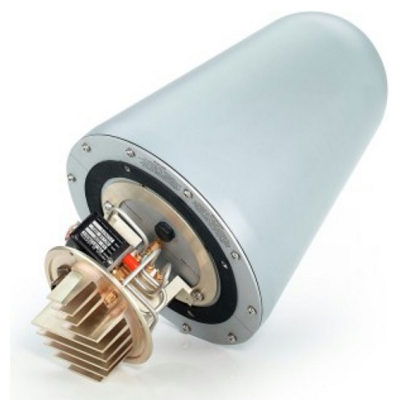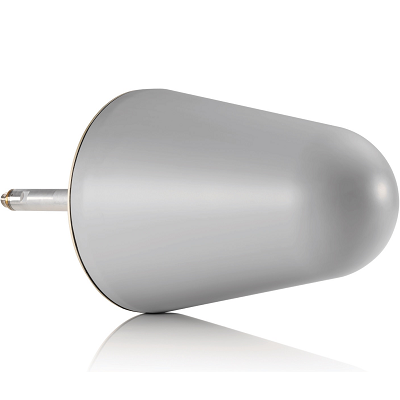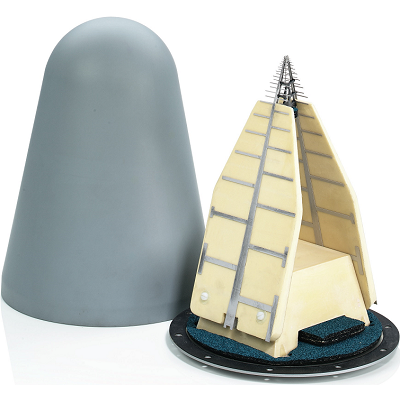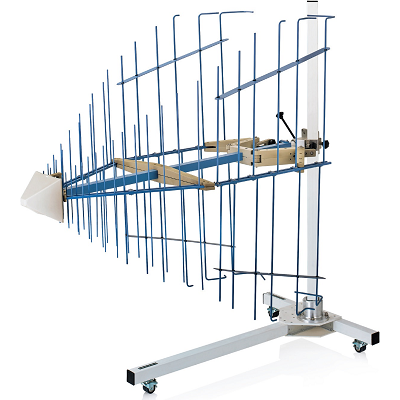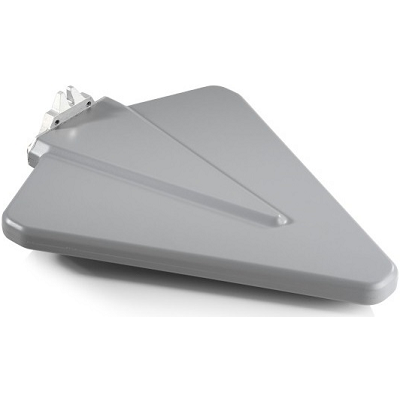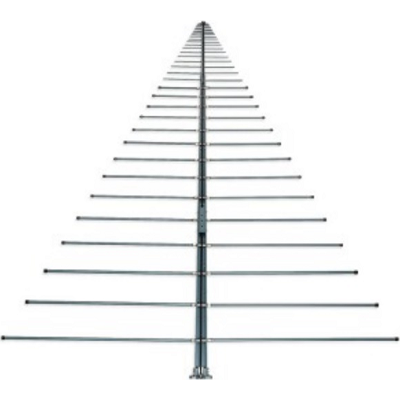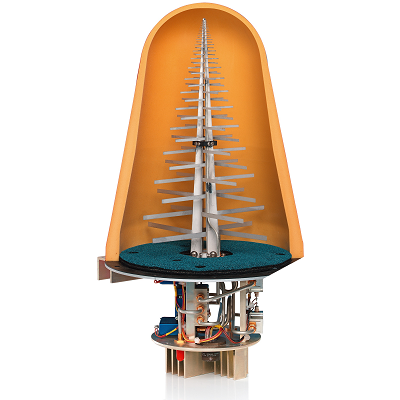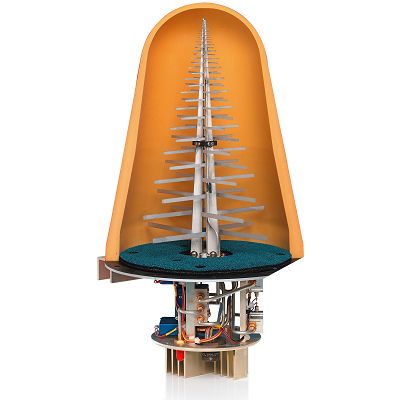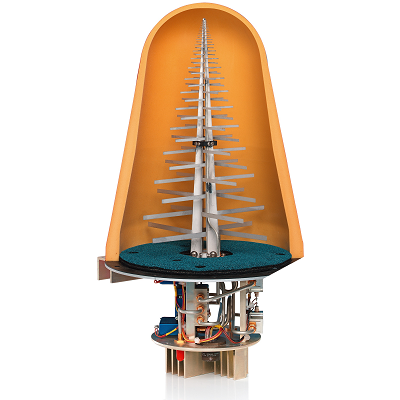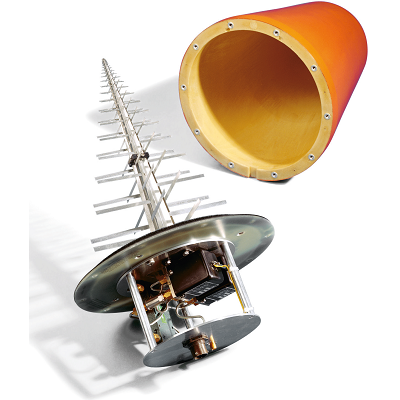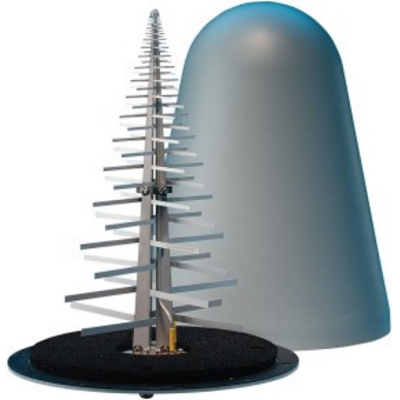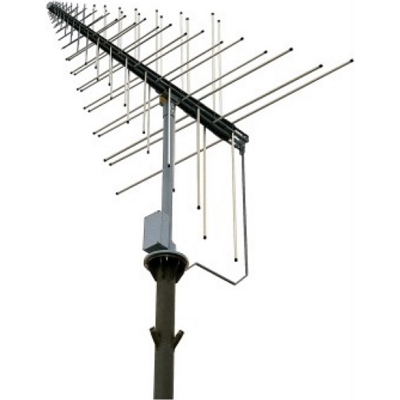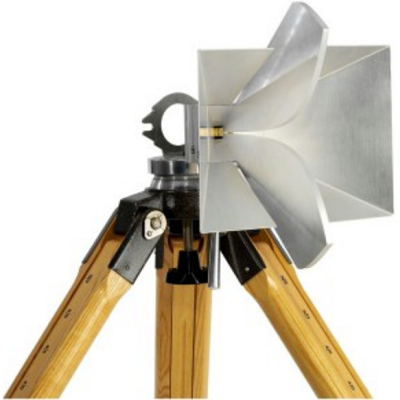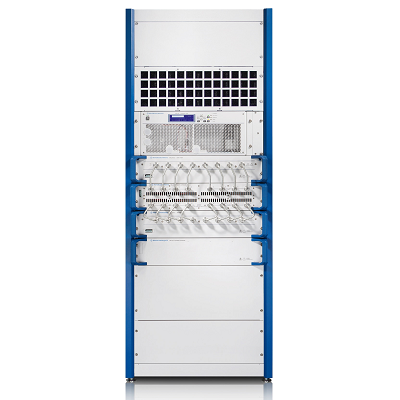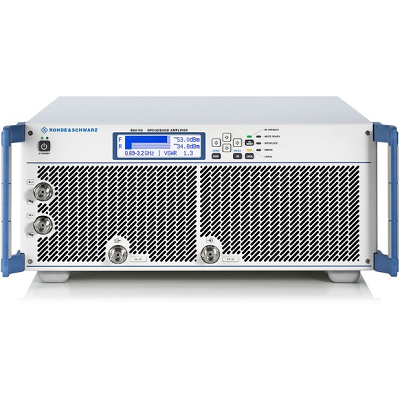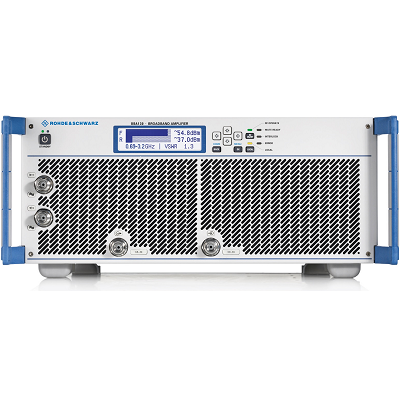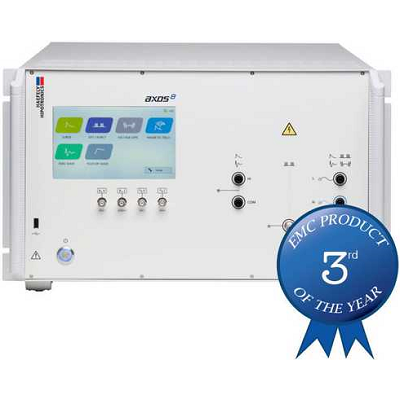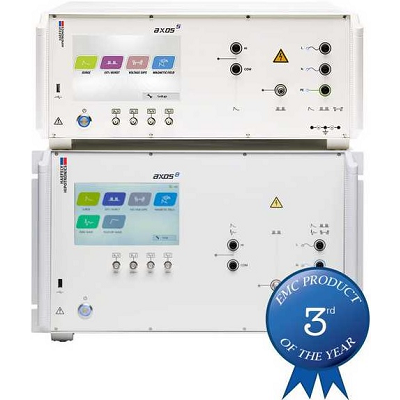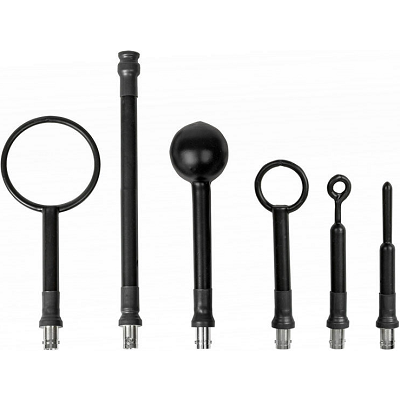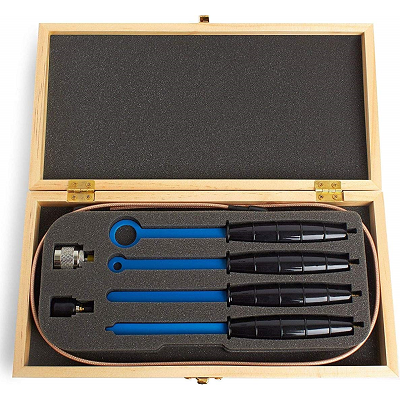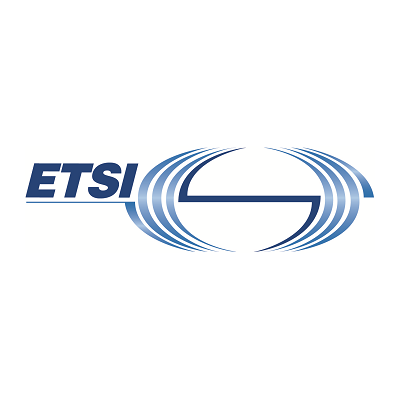
EN 300 329
EN 300 329 Radio Equipment and Systems (RES); ElectroMagnetic Compatibility (EMC) for Digital Enhanced Cordless Telecommunications (DECT) Equipment This European Telecommunication Standard (ETS) covers the assessment of radio communication and ancillary equipment in respect of ElectroMagnetic Compatibility (EMC). This ETS specifies the minimum performance and the methods of measurements of EMC on Digital Enhanced Cordless Telecommunications (DECT) radio and ancillary equipment. This ETS specifies the applicable EMC tests, the limits, and the performance criteria for digital radio equipment as described in ETS 300 175-2 [4] and I-ETS 300 176 [5], operating in the frequency range 1880 to 1900 MHz, and for the associated ancillary equipment. The environment classification used in this ETS refers to the environment classification used in the Generic Standards EN 50081-1 [1] and EN 50082-1 [2], except the vehicular environment class which refers to ISO 7637 [6], [7]. The EMC requirements have been selected to ensure an adequate level of compatibility for apparatus at residential, commercial, light industrial and vehicular environments. The levels, however, do not cover extreme cases which may occur in any location but with a low probability of occurrence. This ETS may not cover those cases where a potential source of interference, which is producing individually repeated transient phenomena, or a continuous phenomena, is permanently present, e.g. a radar or broadcast site in the near vicinity. In such a case it may be necessary to use special protection applied to either the source of interference, or the interfered part, or both. Compliance of radio equipment to the requirements of this ETS does not signify compliance to any requirement related to the use of the equipment (i.e. licensing requirements). Compliance to this ETS does not signify compliance to any safety requirements. However, it is the responsibility of the assessor of the equipment that any observation regarding the equipment becoming dangerous or unsafe as a result of the application of the tests of this ETS, should be recorded in the test report. Preview Standard

EN 300 340
EN 300 340 Radio Equipment and Systems (RES); Electro-Magnetic Compatibility (EMC) for European Radio Message System (ERMES) paging receivers This ETS covers the requirements for the assessment of ERMES paging receivers and ancillary equipment in respect of Electro-Magnetic Compatibility (EMC) and may be used to demonstrate presumption of compliance with the protection requirements of Council Directive 89/336/EEC [4], Article 4 (EMC Directive). This ETS specifies the applicable EMC tests, the method of measurements, the limits and the minimum performance criteria for ERMES paging receivers (as defined in ETS 300 133 [5]) and the associated ancillary equipment. The environment classification used in this ETS refers to the environment classification used in the Generic Standards EN 50081-1 [1], EN 50082-1 [2], except the vehicular environment class which refers to the ISO 7637 [6]. The EMC requirements have been selected to ensure an adequate level of compatibility for apparatus at residential, commercial, light industrial and vehicular environments. The levels, however, do not cover extreme cases which may occur in any location but with a low probability of occurrence. This ETS may not cover those cases where a potential source of interference which is producing individually repeated transient phenomena or a continuous phenomenon is permanently present, e.g. a radar or broadcast site in the near vicinity. In such a case it may be necessary to use special protection applied to either the source of interference or the interfered part or both. Compliance of radio equipment to the requirements of this ETS does not signify compliance to any requirement related to the use of the equipment (i.e. licensing requirements). Compliance to this ETS does not signify compliance to any safety requirements. However, it is the responsibility of the assessor of the equipment that any observation regarding the equipment becoming dangerous or unsafe as a result of the application of the tests of this ETS, should be recorded in the test report. Preview Standard

EN 300 342-1
EN 300 342-1 Radio Equipment and Systems (RES); ElectroMagnetic Compatibility (EMC) for European digital cellular telecommunications system (GSM 900 MHz and DCS 1800 MHz) Part 1: Mobile and portable radio and ancillary equipment This second edition European Telecommunication Standard (ETS) covers the assessment of radio communication and ancillary equipment in respect of ElectroMagnetic Compatibility (EMC). Technical specifications related to the antenna port and emissions from the enclosure port of radio equipment are found in the related product standards for the effective use of the radio spectrum. This ETS specifies the applicable EMC tests, the methods of measurement, the frequency range, the limits and the minimum performance criteria for Phase 1 and Phase 2 GSM 900 MHz and DCS 1 800 MHz digital public cellular mobile and portable radio equipment, transmitting and receiving speech and/or data, and the associated ancillary equipment. Base station equipment operating within network infrastructure is outside the scope of this ETS. However, this ETS does cover mobile and portable equipment that is intended to be operated in a fixed location while connected to the AC mains. The environment classification used in this ETS refers to the environment classification used in the Generic Standards EN 50081-1 [1], EN 50082-1 [2], except the vehicular environment class which refers to ISO 7637 Part 1 [3] and Part 2 [4]. For the purposes of this ETS, Mobile Stations (MS) are considered to be radio communications equipment. The EMC requirements have been selected to ensure an adequate level of compatibility for apparatus in residential, commercial, light industrial and vehicular environments. The levels however, do not cover extreme cases which may occur in any location but with low probability of occurrence. This ETS may not cover those cases where a potential source of interference which is producing individually repeated transient phenomena, or a continuous phenomena, is permanently present, e.g. a radar or broadcast site in the near vicinity. In such a case it may be necessary to use special protection applied to either the source of interference or the interfered part or both. Preview Standard

EN 300 386 V1.3.2
EN 300 386 V1.3.2 (2003-05) Electromagnetic compatibility and Radio spectrum Matters (ERM); Telecommunication network equipment; ElectroMagnetic Compatibility (EMC) requirements The purpose of this standard is to measure the EMC requirements for equipment intended to be used within a telecommunications network (as defined in clause 3). Examples of such equipment are:
- Switching equipment, such equipment includes:
- local telephone exchanges
- remote switching concentrators
- international switches
- telex switches
- network packet switches
- Non-radio transmission equipment and ancillary equipment. Such equipment includes:
- multiplexers
- line equipment and repeaters, e.g. equipment for:
- Synchronous Digital Hierarchy (SDH)
- Plesiochronous Digital Hierarchy (PDH)
- Asynchronous Transfer Mode (ATM) Such as:
- Digital Cross Connect systems
- network terminations
- transmission equipment used in the access network like XDSL
- Power supply equipment. Such equipment includes
- central power plant
- end of suite power supplies
- uninterruptible power supplies
- stabilized AC power supplies
- other dedicated telecommunication network power supplies; but excludes equipment which is uniquely associated with or integrated in other equipment
- Supervisory equipment, such equipment includes:
- network management equipment
- operator access maintenance equipment
- traffic measurement systems
- line test units
- functional test units

EN 300 386-2 V1.1.3
EN 300 386-2 V1.1.3 (1997-12) Electromagnetic compatibility and Radio spectrum Matters (ERM); Telecommunication network equipment; ElectroMagnetic Compatibility (EMC) requirements Part 2: Product family standard This standard defines the product-specific performance criteria and operating conditions for equipment intended to be used within a telecommunications network (as defined in clause 3).
- Switching equipment, such equipment includes:
- local telephone exchanges
- remote switching concentrators
- international switches
- telex switches
- network packet switches
- Non-radio transmission equipment and ancillary equipment. Such equipment includes:
- multiplexers
- line equipment and repeaters, e.g. equipment for:
- Synchronous Digital Hierarchy (SDH)
- Plesiochronous Digital Hierarchy (PDH)
- Asynchronous Transfer Mode (ATM) Such as:
- Digital Cross Connect systems
- network terminations
- transmission equipment used in the access network like XDSL
- Power supply equipment. Such equipment includes
- central power plant
- end of suite power supplies
- uninterruptible power supplies
- stabilized AC power supplies
- other dedicated telecommunication network power supplies; but excludes equipment which is uniquely associated with or integrated in other equipment
- Supervisory equipment, such equipment includes:
- network management equipment
- operator access maintenance equipment
- traffic measurement systems
- line test units
- functional test units

EN 301 489-1
EN 301 489-1 Electromagnetic compatibility and Radio spectrum Matters (ERM); ElectroMagnetic Compatibility (EMC) standard for radio equipment and services; Part 1: Common technical requirements EN 301 489-1 contains the common requirements for radio communications equipment and associated ancillary equipment, in respect of ElectroMagnetic Compatibility (EMC). Product dependent arrangements necessary to perform the EMC tests on dedicated types of radio communications equipment, and the assessment of test results, are detailed in the appropriate product related parts of EN 301 489 series [i.13]. The present document, together with the product related part, specifies the applicable EMC tests, the methods of measurement, the limits and the performance criteria for radio equipment and associated ancillary equipment. In case of differences (for instance concerning special conditions, definitions, abbreviations) between part 1 of EN 301 489 series [i.13] and the relevant product related part of EN 301 489 series [i.13], the product related part takes precedence. Technical specifications related to the antenna port of radio equipment and radiated emissions from the enclosure port of radio equipment and combinations of radio and associated ancillary equipment are not included in the present document. Such technical specifications are normally found in the relevant product standards for the effective use of the radio spectrum. The environment classification used in the present document refers to the environment classification used in:
- EN 61000-6-3 [i.4] and EN 61000-6-1 [i.5] for the residential, commercial and light industrial environment
- TR 101 651 [i.6] for the telecommunication centre environment
- ISO 7637-2 [8] for the vehicular environment

EN 301 489-17
EN 301 489-17 Electromagnetic Compatibility and Radio Spectrum Matters (ERM); Electromagnetic Compatibility (EMC) Standard for Radio Equipment; Part 17: Specific Conditions for 2,4 Ghz Wideband Transmission Systems, 5 GHz High Performance RLAN Equipment and 5,8 GHz Broadband Data Transmitting Systems EN 301 489-17 together with EN 301 489-1 [1], covers the assessment of the 2,4 GHz wideband transmission systems and 5 GHz high performance RLAN (including HIPERLAN 1 and 2 and other) including Broadband Data Transmitting System equipment, in respect of ElectroMagnetic Compatibility (EMC). Technical specifications related to the antenna port and emissions from the enclosure port of the radio equipment are not included in the present document. Such technical specifications are found in the relevant product standards for the effective use of the radio spectrum. The present document specifies the applicable test conditions, performance assessment and performance criteria for wideband data communication systems. Examples of types of wide band data communications systems covered by the present document are given in annex A. In case of differences (for instance concerning special conditions, definitions, abbreviations) between the present document and EN 301 489-1 [1], the provisions of the present document take precedence. The environmental classification and the emission and immunity requirements used in the present document are as stated in EN 301 489-1 [1], except for any special conditions included in the present document. Preview Standard

EN 301 489-24
EN 301 489-24 Electromagnetic Compatibility and Radio Spectrum Matters (ERM); Electromagnetic Compatibility (EMC) Standard for Radio Equipment and Services; Part 24: Specific Conditions for IMT-2000 CDMA Direct Spread (UTRA and E-UTRA) For Mobile and Portable (UE) Radio and Ancillary Equipment EN 301 489-24 together with EN 301 489-1 [1], covers the assessment of 3rd generation digital cellular IMT-2000 CDMA Direct Spread (UTRA and E-UTRA) mobile and portable (UE) radio terminal equipment and associated ancillary equipment in respect of ElectroMagnetic Compatibility (EMC). Technical specifications related to the antenna port and emissions from the enclosure port of radio equipment are not included in the present document. Such technical specifications are found in the relevant product standards for the effective use of the radio spectrum. The present document specifies the applicable test conditions, performance assessment and performance criteria of 3rd generation digital cellular IMT-2000 CDMA Direct Spread (UTRA and E-UTRA) mobile and portable (UE) radio terminal equipment and associated ancillary equipment. Examples of digital cellular mobile and portable radio equipment covered by the present document are given in annex A. In case of differences (for instance concerning special conditions, definitions, abbreviations) between the present document and EN 301 489-1 [1], the provisions of the present document take precedence. Base station (BS) equipment operating within network infrastructure is outside the scope of the present document. However, the present document does cover mobile and portable equipment that is intended to be operated in a fixed location while connected to the AC mains (see clause 5.5). The environment classification and the emission and immunity requirements used in the present document are as stated in EN 301 489-1 [1], except for any special conditions included in the present document. Preview Standard

EN 301 489-7
EN 301 489-7 Electromagnetic Compatibility and Radio Spectrum Matters (ERM); Electromagnetic Compatibility (EMC) Standard for Radio Equipment and Services; Part 7: Specific Conditions for Mobile and Portable Radio and Ancillary Equipment of Digital Cellular Radio Telecommunications Systems (GSM and DCS) The present document, together with EN 301 489-1 [1], covers the assessment of radio equipment meeting Phase 1, Phase 2, and Phase 2+ GSM and DCS digital cellular mobile and portable radio equipment transmitting and receiving speech and/or data, and operating in digital cellular radio telecommunications systems, and associated ancillary equipment in respect of ElectroMagnetic Compatibility (EMC). Technical specifications related to the antenna port and emissions from the enclosure port of radio equipment are not included in the present document. Such technical specifications are found in the relevant product standards for the effective use of the radio spectrum. The present document specifies the applicable test conditions, performance assessment and performance criteria for Phase 1, Phase 2, and Phase 2+ GSM and DCS digital cellular mobile and portable radio equipment, transmitting and receiving speech and/or data, and associated ancillary equipment. Examples of digital cellular mobile and portable radio equipment covered by the present document are given in annex A. In case of differences (for instance concerning special conditions, definitions, abbreviations) between the present document and EN 301 489-1 [1], the provisions of the present document take precedence. Base station equipment (BTS and BSS) operating within network infrastructure is outside the scope of the present document. However, the present document does cover mobile and portable equipment that is intended to be operated in a fixed location while connected to the AC mains (see clause 5.5). The environment classification and the emission and immunity requirements used in the present document are as stated in EN 301 489-1 [1], except for any special conditions included in the present document. Preview Standard

EN 50081-1
EN 50081-1 Electromagnetic Compatibility - Generic Emission Standard Part 1: Residential, Commercial and Light Industry - Withdrawn EN 50081-1 (1992) requires that equipment intended for use in the residential, commercial, and light industrial environments complies with the Class B limit of EN 55022, while EN 50081-2 (1993) allows equipment for use in the heavy industrial environment to comply with Class A limit. EN 55022 does not rigidly relate the A and B classification to particular environments but states that Class B ITE is intended primarily for use in the domestic environment. Note: this standard has been replaced by EN 61000-6-3 Preview Standard
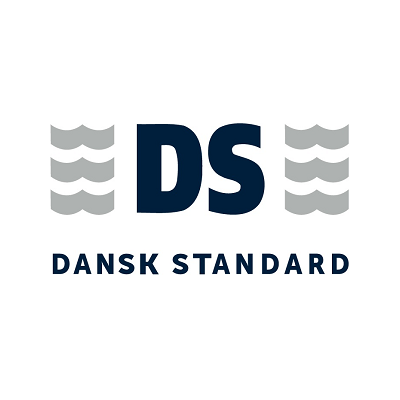
EN 50081-2
EN 50081-2 Electromagnetic Compatibility - Generic Emission Standard - Part 2: Industrial Environment - Withdrawn EN 50081-2 (1994) standard for emission requirements applies to electrical and electronic apparatus intended for use in industrial environment, as described in clause 5, for which no dedicated product or product-family emission standard exists. Apparatus designed to radiate electromagnetic energy for radio communications purposes is excluded from this standard. EN 50081-2 allows equipment for use in the heavy industrial environment to comply with Class A limit. EN 55022 does not rigidly relate the A and B classification to particular environments but states that Class B ITE is intended primarily for use in the domestic environment. This standard has no normative requirements for the limitation of harmonics and flicker; an informative annex states that limits are under consideration by IEC SC77A. Therefore there are no limits for harmonics and flicker for products outside the scope of ENs 60555-2 and -3 until 1st January 2001. After that date, all apparatus within the scopes of ENs 61000-3-2 and -3 must comply with those standards (including continuing production of apparatus types existing before that date). Note: this standard has been replaced by EN 61000-6-4 Preview Standard
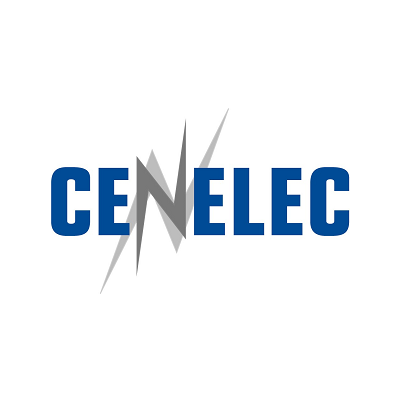
EN 50082-1
EN 50082-1 Electromagnetic Compatibility - Generic Immunity Standard Part 1: Residential, Commercial and Light Industry - Withdrawn EN 50082-1 applies to electrical and electronic apparatus intended for use in industrial environments, as described below. Immunity requirements in the frequency range 0 Hz to 400 GHz are covered. No tests need to be performed at frequencies where no requirements are specified. This generic EMC immunity standard is applicable if no relevant dedicated product or product-family EMC immunity standard exists. This standard applies to apparatus intended to be connected to a power network supplied from a high or medium voltage transformer dedicated to the supply of an installation feeding manufacturing or similar plant, and intended to operate in or in proximity to industrial locations, as described below. This standard applies also to apparatus which is battery operated and intended to be used in industrial locations. The environments encompassed by this standard are industrial, both indoor and outdoor. Note: European harmonised generic standards will be identical to IEC generic standards in future; this implies a change in numbering (e.g. EN 61000-6-1 will replace EN 50082-1). Note: this standard has been replaced by EN 61000-6-1 Preview Standard

EN 50082-2
EN 50082-2 Electromagnetic Compatibility Generic Immunity Standard - Part 2: Industrial Environment - Withdrawn EN 50082-2 for EMC immunity requirements applies to electrical and electronic equipment intended for use in industrial locations, as described below. Immunity requirements in the frequency range 0 Hz to 400 GHz are covered. No tests need to be performed at frequencies where no requirements are specified. This generic EMC immunity standard is applicable if no relevant dedicated product or product-family EMC immunity standard exists. This standard applies to apparatus intended to be connected to a power network supplied from a high or medium voltage transformer dedicated to the supply of an installation feeding manufacturing or similar plant, and intended to operate in or in proximity to industrial locations, as described below. This standard applies also to apparatus which is battery operated and intended to be used in industrial locations. The environments encompassed by this standard are industrial, both indoor and outdoor. Note: European harmonised generic standards will be identical to IEC generic standards in future; this implies a change in numbering (e.g. EN 61000-6-2 will replace EN 50082-2). Note: this standard has been replaced with EN 61000-6-2 Preview Standard

EN 50121
EN 50121: Railway Applications - Electromagnetic Compatibility The EMC standard EN 50121 is used to characterize the EM environment, in the railway systems; it notably aim to limit the EMI levels from the railway infrastructures to the external environment. This standard EN 50121 describes the methodologies and the limits to apply, relating to the EM radiations and immunity of railway equipments, vehicles and infrastructures. The emissions of the whole railway system, including vehicles and infrastructure, are dealt with the section 2 of the EN 50121. The objective of the tests specified in this standard is to verify that the EM emissions produced by the whole railway systems do not disturb the neighboring equipments and systems. EN 50121-1: Railway applications - Electromagnetic compatibility Part 1: General EN 50121-2: Railway applications - Electromagnetic compatibility - Part 2: emission of the whole railway system to the outside world EN 50121-3-1: Railway applications - Electromagnetic compatibility - Part 3-1: rolling stock - Train and complete vehicle EN 50121-3-2: Railway applications - Electromagnetic compatibility - Part 3-2: rolling stock - Apparatus EN 50121-4: Railway applications - Electromagnetic compatibility - Part 4: emission and immunity of the signaling and telecommunications apparatus EN 50121-5: Railway applications - Electromagnetic compatibility - Part 5: Emission and immunity of fixed power supply installations and apparatus Preview Standard

EN 50155
EN 50155 Railway Applications - Electronic Equipment used on Rolling Stock This standard applies to all electronic equipment for control, regulation, protection, supply, etc., installed on rail vehicles and associated with either the accumulator battery of the vehicle; or a low voltage power supply source with or without a direct connection to the contact system (transformer, potentiometer device, auxiliary supply); with the exception of electronic power circuits, which conform to EN 50207. This standard covers the conditions of operation, design, construction, and testing of electronic equipment, as well as basic hardware and software requirements considered necessary for competent, reliable equipment. Additional requirements in other standards or individual specifications may complement this standard, if they are justified. Specific requirements related to practices necessary to assure defined levels of functional safety are to be determined in accordance with 4.6.3.1 and 4.6.3.2 of EN 50126 and its informative Annex A. Software safety integrity level of 1 or higher shall only be considered when it is shown that a residual safety risk remains and that it has to be carried by the software driven programmable electronic system. In such a case (i.e. software safety integrity level 1 or higher), EN 50128 is applicable. For the purpose of this standard, electronic equipment is defined as equipment mainly composed of semiconductor devices and recognized associated components. These components will mainly be mounted on printed boards. NOTE: Sensors (current, voltage, speed, etc.) and firing unit printed board assemblies for power electronic devices are covered by this standard. Complete firing units are covered by EN 50207. Preview Standard

EN 50370-1
EN 50370-1 Electromagnetic Compatibility (EMC) - Product Family Standard for Machine Tools Part 1: Emission This standard deals with the electromagnetic emission (radio frequency protection) of machine tools, excluding electro discharge machines (EDM), designed exclusively for industrial and similar purposes that use electricity, the rated voltage of the machine tool not exceeding 1000 VAC or 1500 VDC between lines. Machine tools may incorporate motors, heating elements or their combination, may contain electric or electronic circuitry, and may be powered by the mains, or any other electrical power source. NOTE: This standard does not cover fixed installations as defined in the Guide to the Application of Directive 89/336/EEC, published by the European Commission. Emission requirements in the frequency range 9 kHz to 400 GHz are covered. No measurements need to be performed at frequencies where no requirements are specified. Preview Standard

EN 50561-1
EN 50561-1 Power Line Communication Apparatus used in Low-Voltage Installations - Radio Disturbance Characteristics - Limits and Methods of Measurement - Part 1: Apparatus for in-home use This part of EN 50561 specifies limits and methods of measurement of radio disturbance characteristics for in-home communication apparatus that use the low-voltage power installation as the transmission medium. This part of EN 50561 applies to equipment that communicates over this medium in the frequency range 1,606 5 MHz to 30 MHz. NOTE: Similar equipment that communicates outside this frequency range is under study and will be covered by another European Standard. Procedures are given for the measurement of signals generated by the equipment and limits are specified for the frequency range 9 kHz to 400 GHz. No measurement is required at frequencies where no limit is specified. Preview Standard

EN 55011
EN 55011 Industrial, Scientific and Medical Equipment - Radio-Frequency Disturbance Characteristics - Limits and Methods of Measurement This International Standard applies to industrial, scientific and medical electrical equipment operating in the frequency range 0 Hz to 400 GHz and to domestic and similar appliances designed to generate and/or use locally radio-frequency energy. This standard covers emission requirements related to radio-frequency (RF) disturbances in the frequency range of 9 kHz to 400 GHz. Measurements need only be performed in frequency ranges where limits are specified in Clause 6. For ISM RF applications in the meaning of the definition found in the ITU Radio Regulations (see Definition 3.13), this standard covers emission requirements related to radio-frequency disturbances in the frequency range of 9 kHz to 18 GHz. Preview Standard

EN 55013
EN 55013 Sound and Television Broadcast Receivers and associated Equipment - Radio Disturbance Characteristics - Limits and Methods of Measurement EN 55013 applies to the generation of electromagnetic energy from sound and television receivers for the reception of broadcast and similar transmissions and from associated equipment. The frequency range covered extends from 9 kHz to 400 GHz. No measurements need be performed at frequencies where no limits are specified. Receiving systems for collective reception, in particular: cable distribution head ends (Community Antenna Television, CATV); community reception systems (Master Antenna Television, MATV) are covered by IEC 60728-2. Broadcast receivers for digital signals are covered by Annex A and Annex B. Information technology equipment (ITE) is excluded, even if intended to be connected to a television broadcast receiver. The telecommunication port of broadcast receivers, intended to be connected to a telecommunication network, is covered by CISPR 22. This standard describes the methods of measurement applicable to sound and television receivers or associated equipment and specifies limits for the control of disturbance from such equipment. Preview Standard

EN 55014-1
EN 55014-1 Electromagnetic Compatibility - Requirements for Household Appliances, Electric Tools and Similar Apparatus - Part 1: Emission This standard applies to the conduction and the radiation of radio-frequency disturbances from appliances whose main functions are performed by motors and switching or regulating devices, unless the r.f. energy is intentionally generated or intended for illumination. It includes such equipment as: household electrical appliances, electric tools, regulating controls using semiconductor devices, motor-driven electro-medical apparatus, electric/electronic toys, automatic dispensing machines as well as cine or slide projectors. Preview Standard

EN 55015
EN 55015 Limits and Methods of Measurement of Radio Disturbance Characteristics of Electrical Lighting and Similar Equipment This standard applies to the emission (radiated and conducted) of radiofrequency disturbances from:
- all lighting equipment with a primary function of generating and/or distributing light intended for illumination purposes, and intended either for connection to the low voltage electricity supply or for battery operation
- the lighting part of multi-function equipment where one of the primary functions of this is illumination
- independent auxiliaries exclusively for use with lighting equipment;
- UV and IR radiation equipment
- neon advertising signs
- street/flood lighting intended for outdoor use
- transport lighting (installed in buses and trains)

EN 55020
EN 55020 Sound and Television Broadcast Receivers and Associated Equipment - Immunity Characteristics - Limits and Methods of Measurement This standard for immunity requirements applies to television broadcast receivers, sound broadcast receivers and associated equipment intended for use in the residential, commercial and light industrial environment. This standard describes the methods of measurement and specified limits applicable to sound and television receivers and to associated equipment with regard to their immunity characteristics to disturbing signals. This standard is also applicable to the immunity of outdoor units of direct to home (DTH) satellite receiving systems for individual reception. Immunity requirements are given in the frequency range 0 Hz to 400 GHz. Radio-frequency tests outside the specified frequency bands or concerning other phenomena than given in this standard are not required. The objective of this standard is to define the immunity test requirements for equipment defined in the scope in relation to continuous and transient conducted and radiated disturbances including electrostatic discharges. These test requirements represent essential electromagnetic immunity requirements. Preview Standard

EN 55022
EN 55022 Information Technology Equipment - Radio Disturbance Characteristics - Limits and Methods of Measurement - Withdrawn EN 55022 is a modified derivative of CISPR 22 and applies to, as the name implies, information technology equipment (ITE). Procedures given for the measurement of the levels of spurious signals generated by the ITE and limits are specified for the frequency range 9 kHz to 400 GHz for both class A and class B equipment within the standard for protection of radio services in industrial, commercial or residential environments No measurements need be performed at frequencies where no limits are specified. The intention of this publication is to establish uniform requirements for the radio disturbance level of the equipment contained in the scope, to fix limits of disturbance, to describe methods of measurement and to standardize operating conditions and interpretation of results. Note: this standard has been replaced by EN 50561-1 Preview Standard

EN 55024
EN 55024 Information Technology Equipment - Immunity Characteristics - Limits and Methods of Measurement EN 55024 defines the immunity test requirements for information technology equipment (ITE, as defined in CISPR 22) in relation to continuous and transient conducted and radiated disturbances, including electrostatic discharges (ESD). Procedures are defined for the measurement of ITE and limits are specified which are developed for ITE and within the frequency range from 0 Hz to 400 GHz. This publication establishes requirements which will provide an adequate level of intrinsic immunity so that the equipment will operate as intended in its environment. The test requirements are specified for each port considered. Preview Standard

EN 60065
EN 60065 Audio, Video and similar Electronic Apparatus - Safety requirements EN 60065 applies to electronic apparatus designed to be fed from the mains, from a supply apparatus, from batteries or from remote power feeding and intended for reception, generation, recording or reproduction of audio, video and associated signals. It also applies to apparatus designed to be used exclusively in combination with the above-mentioned apparatus. This standard primarily concerns apparatus intended for household and similar general use but which may also be used in places of public assembly such as schools, theatres, places of worship and the workplace professional apparatus intended for use as described above is also covered unless falling specifically within the scope of other standards. Preview Standard
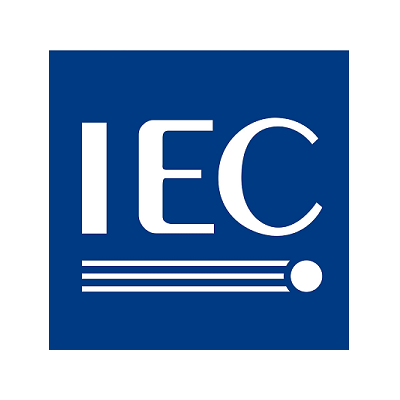
EN 60255-27
EN 60255-27 Measuring Relays and Protection Equipment Part 27: Product safety requirements EN 60255-27 specifies the basic requirements for measuring relays and protection equipment with a rated alternating voltage of up to 1000V and a rated frequency of up to 65 Hz or with a rated direct voltage of up to 1500V. Above these limits, IEC 60664-1 is applicable for the determination of clearance, creepage distance and withstand test voltage. This standard also applies to auxiliary devices such as shunts, series resistors, transformers, etc., that are used in conjunction with measuring relays and protection equipment and are tested together. Ancillary equipment used in conjunction with measuring relays and protection equipment may need to comply with additional safety requirements. The object of this standard is to have a comprehensive standard that covers all aspects of product safety and the related type and routine tests, for measuring relays and protection equipment. Preview Standard

EN 60255-5
EN 60255-5 Electrical Relays - Part 5: Insulation coordination for measuring relays and protection equipment - Requirements and tests - Withdrawn This part of IEC 60255 gives general requirements for the insulation coordination of measuring relays and protection equipment. This standard specifies the following:
- Definition of terms
- Guidance for the selection of clearances and creepage distances and other aspects related to the insulation of measuring relays and protection equipment
- Requirements for voltage tests and insulation resistance measurement

EN 60335-1
EN 60335-1 Household and similar Electrical Appliances - Safety - Part 1: General requirements EN 60335-1 deals with the safety of electrical appliances for household and similar purposes, their rated voltage being not more than 250 V for single-phase appliances and 480 V for other appliances. Battery-operated appliances and other d.c. supplied appliances are within the scope of this standard. Appliances not intended for normal household use but which nevertheless may be a source of danger to the public, such as appliances intended to be used by laymen in shops, in light industry and on farms, are within the scope of this standard. Examples of such appliances are catering equipment, cleaning appliances for commercial use, and appliances for hairdressers. Preview Standard

EN 60945
EN 60945 Maritime Navigation and Radio Communication Equipment and Systems - General Requirements - Methods of Testing and Required Test Results This International Standard assists in meeting a requirement of the International Convention for Safety of Life at Sea (SOLAS), adopted by the International Maritime Organization (IMO), that the radio equipment defined in chapters III and IV, and the navigation equipment defined in chapter V of the Convention, be type-approved by administrations to conform with performance standards not inferior to those adopted by the IMO. (Administrations are defined by the IMO as governments of the states whose flags the ships are entitled to fly.) The performance standard for general requirements for shipborne radio equipment and electronic navigation aids that has been adopted by the IMO is given in IMO Resolution A.694 and is reproduced in this standard as annex A, which forms the basis for this standard. Reference is made, where appropriate, to IMO Resolutions A.694 and A.813 and all subclauses whose wording is identical to that in the resolutions are printed in italics. This standard specifies minimum performance requirements, methods of testing and required test results for general requirements which can be applied to those characteristics common to all equipment described hereunder:
- Shipborne radio equipment forming part of the global maritime distress and safety system required by the International Convention for Safety of Life at Sea (SOLAS) as amended, and by the Torremolinos International Convention for the Safety of Fishing Vessels as amended;
- Shipborne navigational equipment required by the International Convention for Safety of Life at Sea (SOLAS) as amended, and by the Torremolinos International Convention for the Safety of Fishing Vessels as amended, and to other navigational aids, where appropriate; and
- For EMC only, all other bridge-mounted equipment, equipment in close proximity to receiving antennas, and equipment capable of interfering with safe navigation of the ship and with radio-communications (see IMO Resolution A.813).

EN 60950-1
EN 60950-1 Information Technology Equipment - Safety - Part 1: General requirements This standard is applicable to mains-powered or battery-powered information technology equipment, including electrical business equipment and associated equipment, with a RATED VOLTAGE not exceeding 600 V. This standard is also applicable to such information technology equipment:
- designed for use as telecommunication terminal equipment and TELECOMMUNICATION NETWORK infrastructure equipment, regardless of the source of power
- designed and intended to be connected directly to, or used as infrastructure equipment in, a CABLE DISTRIBUTION SYSTEM, regardless of the source of power
- designed to use the AC MAINS SUPPLY as a communication transmission medium (see Clause 6, Note 4 and 7.1, Note 4)

EN 61543
EN 61543 Residual Current-Operated Protective Devices (RCDs) for Household and Similar Use - Electromagnetic Compatibility EN 61543 is intended to ensure electromagnetic compatibility (EMC) of devices providing residual current protection, for rated voltages not exceeding 440 VAC intended principally for protection of persons against shock hazards. This standard applies for environmental conditions which occur in installations connected to low-voltage public networks or similar. It may also provide guidance for ensuring EMC for other products intended for safety purposes or for products including electronic circuits and for which a high level of continuity of service is required. For EMC test requirements not included in the product standards reference should be made to this product family standard. Preview Standard

EN 61643
EN 61643 Low-Voltage Surge Protective Devices - Surge Protective Devices Connected to Low-Voltage Power Systems - Requirements and Test Methods IEC 61643 is applicable to devices for surge protection against indirect and direct effects of lightning or other transient overvoltages. These devices are packaged to be connected to 50/60 Hz AC and DC power circuits, and equipment rated up to 1,000 V r.m.s. or 1,500 VDC. Performance characteristics, standard methods for testing and ratings are established for these devices that contain at least one nonlinear component that is intended to limit surge voltages and divert surge currents. Preview Standards

EN 61730-1
EN 61730-1 Photovoltaic (PV) module safety qualification - Part 1: Requirements for construction This part of IEC 61730 specifies and describes the fundamental construction requirements for photovoltaic (PV) modules in order to provide safe electrical and mechanical operation. Specific topics are provided to assess the prevention of electrical shock, fire hazards, and personal injury due to mechanical and environmental stresses. This part of IEC 61730 pertains to the particular requirements of construction. IEC 61730-2 defines the requirements for testing. This International Standard is designed to coordinate with the test sequences in the IEC 61215 series, so that a single set of samples may be used to perform both the safety and qualification of a photovoltaic module design. The object of this International Standard is to define the requirements for the construction of photovoltaic modules with respect to safety. Preview Standard

EN 61730-2
EN 61730-2 Photovoltaic (PV) module safety qualification - Part 2: Requirements for testing This part of IEC 61730 describes the testing requirements for photovoltaic (PV) modules in order to provide safe electrical and mechanical operation during their expected lifetime. Specific topics are provided to assess the prevention of electrical shock, fire hazards, and personal injury due to mechanical and environmental stresses. IEC 61730-1 pertains to the particular requirements of construction. This part of IEC 61730 outlines the requirements of testing. The test-sequences of this standard are arranged in an optimal way so that tests of IEC 61215 or IEC 61646 can be used as basic preconditioning tests. Preview Standard

FCC 97-270 (Part 68)
Federal Communications FCC 97-270 (Part 68) Connection of Terminal Equipment to the Telephone Network The FCC published in the Federal Register of November 19, 1997 (62 FR 61649), final rules to Part 68 of Title 47, Code of Federal Regulations. Those rules govern the terms and conditions under which customer-provided terminal equipment may be connected to the telephone network without causing harm to the public switched network. On March 9. 1995, the Telecommunications Industry Association (TIA) filed a Petition for Rulemaking (Petition) to amend Sections 68.300 - 68.318 and portions of Section 68.2 of the Commission's rules to harmonize United States network protection standards and corresponding Canadian CS-03 certification regulations. Subpart D of Part 68, which includes Sections 68.300 through 68.318, addresses Conditions for Registration. including requirements for environmental simulation (simulation mimics stresses that terminal equipment undergoes in shipment and handling that could potentially damage it), leakage current limitations, hazardous voltage limitation, signal power limitations, longitudinal balance limitations, on hook impedance limitations, billing protection, and hearing aid compatibility. Section 68.2 addresses the scope of the Commission's rules for terminal attachment. Part 68 of the FCC rules (47 C.F.R. Part 68) governs the direct connection of Terminal Equipment (TE) to the Public Switched Telephone Network (PSTN), and to wireline carrier-owned facilities used to provide private line services. Part 68 also contains rules concerning Hearing Aid Compatibility and Volume Control (HAC/VC) for telephones, dialing frequency for automated dialing machines, source identification for fax transmissions, and technical criteria for inside wiring. Many technical and administrative functions mandated by Part 68 have been privatized. However, the FCC retains the responsibility to enforce Part 68 rules. More about FCC 97-270 (Part 68)

FCC Part 15
FCC Part 15 Digital Devices The Federal Code of Regulation 47CFR Part 15 applies to most electronic equipment being marketed in the United States and includes technical specifications, administrative requirements, and other conditions related to the marketing of FCC Part 15 devices in the United States. FCC Part 15 contains regulations for unintentional and intentional radiators; the focus of this description will be for Digital Devices found under Subpart B of these regulations. Part 15 Subpart AÂ mainly focuses on specific information regarding testing and certification, scope of the rules, definitions, labeling of devices, information provided to the user, and legal responsibilities. Part 15 Subpart BÂ covers requirements specific to Digital Devices and other unintentional radiators. Regulations for Digital Devices under this rule part are separated into two classifications - Class A and Class B, with Class B digital devices being subject to more strict limits on radiated end conducted emissions. More about FCC Part 15

IEC 60060
IEC 60060-1:2010Â High-Voltage Test Techniques - Part 1: General Definitions and Test Requirements IEC 60060-1:2010 applies to dielectric tests with alternating voltage; dielectric tests with direct voltage; dielectric tests with impulse voltage and dielectric tests with combinations of the above. This document is applicable to tests on equipment having its highest voltage for equipment Um above 1 kV. The third edition cancels and replaces the second edition, published in 1989, and constitutes a technical revision. The major technical changes with respect to the previous edition are as follows:
- artificial pollution test procedures were removed as they are now described in IEC 60507
- measurement of impulse current has been transferred to a new standard on current measurement (IEC 62475)
- the atmospheric correction factors are now presented as formulas

IEC 60065
IEC 60065 Audio, Video and Similar Electronic Apparatus - Safety Requirements IEC 60065 applies to electronic apparatus designed to be fed from the mains, from a supply apparatus, from batteries or from remote power feeding and intended for reception, generation, recording or reproduction of audio, video and associated signals. It also applies to apparatus designed to be used exclusively in combination with the above-mentioned apparatus. This standard primarily concerns apparatus intended for household and similar general use but which may also be used in places of public assembly such as schools, theatres, places of worship and the workplace professional apparatus intended for use as described above is also covered unless falling specifically within the scope of other standards. Preview Standard

IEC 60255-1
IEC 60255-1 Measuring Relays and Protection Equipment - Part 1: Common requirements IEC 60255-1 specifies common rules and requirements applicable to measuring relays and protection equipment including any combination of devices to form schemes for power system protection such as control, monitoring and process interface equipment in order to obtain uniformity of requirements and tests. For special applications (marine, aerospace, explosive atmospheres, computers, etc.), the general requirements within this standard may need to be enhanced by additional special requirements. The requirements are applicable only to relays in new condition. All tests in this standard are type tests, unless otherwise declared. Preview Standard

IEC 60255-22-1
IEC 60255-22-1 Measuring Relays and Protection Equipment - Part 22-1: Electrical Disturbance Tests - 1 MHz Burst Immunity Tests - Withdrawn This part of IEC 60255 is based on IEC 61000-4-18, referring to that publication where applicable, and specifies the general requirements for 1 MHz oscillatory wave immunity tests for measuring relays and protection equipment for power system protection, including the control, monitoring and process interface equipment used with the relays and protection equipment. The objective of the tests is to confirm that the equipment under test will operate correctly when energized and subjected to repetitive damped oscillatory waves such as those originating from closing or opening circuit breakers or disconnectors in high voltage substations or power plants. The requirements specified in this standard are applicable to measuring relays and protection equipment in a new condition and all tests specified are type tests only. The object of this standard is to state:
- definition of terms used
- test severity levels
- test equipment
- test set-up
- test procedure
- criteria for acceptance
- test report

IEC 60255-22-5
IEC 60255-22-5 Measuring Relays and Protection Equipment - Part 22-5: Electrical Disturbance Tests - Surge Immunity Test - Withdrawn This part of IEC 60255 is based on IEC 61000-4-5, referring to that publication where applicable, and specifies the general requirements for surge immunity tests for measuring relays and protection equipment for power system protection, including the control, monitoring and process interface equipment used with those systems. The objective of the tests is to confirm that the equipment under test will operate correctly when energized and subjected to high-energy disturbances on the power and interconnection lines, caused by surge voltages from switching and lightning effects. This standard does not intend to test the capability of the insulation to withstand high-voltage stress. The insulation test is covered by IEC 60255-27. The requirements specified in this standard are applicable to measuring relays and protection equipment in a new condition and all tests specified are type tests only. The object of this standard is to define:
- terms used
- test severity levels
- test equipment
- test set-up
- test procedures
- criteria for acceptance
- test report requirements

IEC 60255-22-7
IEC 60255-22-7 Electrical Relays - Part 22-7: Electrical Disturbance Tests For Measuring Relays and Protection Equipment - Power Frequency Immunity Tests - Withdrawn This part of IEC 60255 is based on the concepts described in IEC 61000-4-16, referring to that publication where applicable, and specifies the general requirements for power frequency immunity tests for measuring relays and protection equipment for power system protection, including the control, monitoring and process interface equipment used with those systems. The objective of the tests is to confirm that the equipment under test (EUT) will operate correctly when energized and subjected to short duration, conducted, common and differential mode power frequency disturbances applied to DC status inputs, at the rated frequency of the EUT, for example 162/3 Hz, 50 Hz and 60 Hz. The testing of pilot wire schemes between substations is not covered by this standard. The requirements specified in this standard are applicable to measuring relays and protection equipment in a new condition and all tests specified are type tests only. The object of this standard is to state:
- definitions of terms used
- test severity levels
- test equipment
- test set-up
- test procedures
- criteria for acceptance
- test report

IEC 60255-26
IEC 60255-26 Measuring Relays and Protection Equipment - Part 26: Electromagnetic Compatibility Requirements This part of the IEC 60255 series is applicable to measuring relays and protection equipment, taking into account combinations of devices to form schemes for power system protection including the control, monitoring, communication and process interface equipment used with those systems. This standard specifies the requirements for electromagnetic compatibility for measuring relays and protection equipment. Tests specified in this standard are not required for equipment not incorporating electronic circuits, for example electromechanical relays. The requirements specified in this standard are applicable to measuring relays and protection equipment in a new condition and all tests specified are type tests only. Emission The object of this standard is to specify limits and test methods, for measuring relays and protection equipment in relation to electromagnetic emissions which may cause interference in other equipment. These emission limits represent electromagnetic compatibility requirements and have been selected to ensure that the disturbances generated by measuring relays and protection equipment, operated normally in substations and power plants, do not exceed a specified level which could prevent other equipment from operating as intended. Test requirements are specified for the enclosure and auxiliary power supply ports. Immunity This standard is to specify the immunity test requirements for measuring relays and protection equipment in relation to continuous and transient conducted and radiated disturbances, including electrostatic discharges. These test requirements represent the electromagnetic compatibility immunity requirements and have been selected so as to ensure an adequate level of immunity for measuring relays and protection equipment, operated normally in substations and power plants. Preview Standard

IEC 60255-27
IEC 60255-27 Measuring Relays and Protection Equipment - Part 27: Product Safety Requirements This part of the IEC 60255 series describes the product safety requirements for measuring relays and protection equipment having a rated a.c. voltage up to 1000 V with a rated frequency up to 65 Hz, or a rated d.c. voltage up to 1500 V. Above these limits, IEC 60664-1 is applicable for the determination of clearance, creepage distance and withstand test voltage. This standard details essential safety requirements to minimize the risk of fire and hazards caused by electric shock or injury to the user. The object of this standard is to have a comprehensive standard that covers all aspects of product safety and the related type and routine tests, for measuring relays and protection equipment. Preview Standard

IEC 60255-5
IEC 60255-5 Electrical Relays - Part 5: Insulation Coordination for Measuring Relays and Protection Equipment - Requirements and Tests - Withdrawn IEC 60255-5 lays down general requirements for the insulation coordination of measuring relays and protection equipment. Gives guidance for the selection of clearances and creepage distances and other aspects related to the insulation of measuring relays and protection equipment; specifies requirements for voltage tests and insulation resistance measurement. This standard also applies to associated auxiliary devices such as shunts, series resistors, transformers, etc., used and tested together with measuring relays and protection equipment as mentioned above, except where the devices are covered by other IEC publications, for example communication interfaces. Note: this standard has been replaced by IEC 60255-27 Preview Standard

IEC 60335-1
IEC 60335-1 Household and Similar Electrical Appliances - Safety - Part 1: General Requirements IEC 60335-1 deals with the safety of electrical appliances for household and similar purposes, their rated voltage being not more than 250 V for single-phase appliances and 480 V for other appliances. Battery-operated appliances and other d.c. supplied appliances are within the scope of this standard. Appliances not intended for normal household use but which nevertheless may be a source of danger to the public, such as appliances intended to be used by laymen in shops, in light industry and on farms, are within the scope of this standard. Examples of such appliances are catering equipment, cleaning appliances for commercial use, and appliances for hairdressers. Preview Standard

IEC 60384-14
IEC 60384-14 Fixed Capacitors for Use in Electronic Equipment - Part 14: Sectional Specification - Fixed Capacitors for Electromagnetic Interference Suppression and Connection to the Supply Mains This part of IEC 60384 applies to capacitors and resistor-capacitor combinations which will be connected to an a.c. mains or other supply with nominal voltage not exceeding 1000 VAC (r.m.s.) or 1500 VDC and with a nominal frequency not exceeding 100 Hz. Preview Standard

IEC 60533
IEC 60533 Electrical and Electronic Installations in Ships - Electromagnetic Compatibility (EMC) - Ships With a Metallic Hull IEC 60533 specifies minimum requirements for emission, immunity and performance criteria regarding electromagnetic compatibility (EMC) of electrical and electronic equipment for ships with metallic hull. This edition includes the following significant technical changes with respect to the previous edition:
- Introduction has been supplemented
- scope and title have been modified to limit the application of the standard to installations in ships with metallic hulls only
- the normative references have been updated
- further explanation for in-situ testing has been given in 5.1
- numbering of CISPR-Standards in Tables 1, 2 and 3 has been updated
- title of Annex B has been changed
- requirements on cable routing in Annex B have been amended
- new Annex C EMC test report has been added

IEC 60601-1-2
IEC 60601-1-2 Medical Electrical Equipment - Part 1-2: General Requirements For Basic Safety and Essential Performance - Collateral Standard: Electromagnetic Disturbances - Requirements and Tests EC 60601-1-2 applies to the basic safety and essential performance of Medical Equipment (ME) equipment and ME systems in the presence of electromagnetic disturbances and to electromagnetic disturbances emitted by me equipment and me systems. This collateral standard to IEC 60601-1 specifies general requirements and tests for basic safety and essential performance with regard to electromagnetic disturbances and for electromagnetic emissions of ME equipment and ME systems. They are in addition to the requirements of the general standard IEC 60601-1 and serve as the basis for particular standards. Preview Standard

IEC 60664
IEC 60664 Insulation Coordination for Equipment within Low-Voltage Systems - Part 1: Principles, Requirements and Tests IEC 60664 provides insulation coordination for equipment within low-voltage systems. It applies to equipment for use up to 2 000 m above sea level having a rated voltage up to a.c. 1000 V with rated frequencies up to 30 kHz, or a rated voltage up to d.c. 1500 V. The object of this basic safety standard is to guide technical committees responsible for different equipment in order to rationalize their requirements so that insulation coordination is achieved. Preview Standard

IEC 60725
IEC 60725 Consideration Of Reference Impedances And Public Supply Network Impedances For Use In Determining The Disturbance Characteristics Of Electrical Equipment Having A Rated Current ≤75 A Per Phase IEC/TR 60725 is a technical report, which records the information that was available and the factors that were taken into account in arriving at the reference impedances that were incorporated in IEC 60555 and which are now incorporated in some parts of IEC 61000-3. In addition, information is given on the impedances of public supply networks associated with service current capacities ≤100 A per phase. The third edition includes brings two mainly significant technical changes with respect to the previous edition:
- a new survey and other data from countries with public supply networks operating at 60 Hz have been included
- recommendations that were applicable to 50 Hz systems are now mirrored by new recommendations that are relevant to 60 Hz systems

IEC 60747-5
IEC 60747-5 Semiconductor Devices - Discrete Devices - Part 5: Optoelectronic Devices - Photocouplers IEC 60747-5 gives the terminology, essential ratings, characteristics, safety test as well as the measuring method for photocouplers (or optocouplers). Preview Standard

IEC 60945
IEC 60945 Maritime Navigation and Radio Communication Equipment and Systems - General Requirements - Methods of Testing and Required Test Results IEC 60945 assists in meeting a requirement of the International Convention for Safety of Life at Sea (SOLAS), adopted by the International Maritime Organization (IMO), that the radio equipment defined in chapters III and IV, and the navigation equipment defined in chapter V of the Convention, be type-approved by administrations to conform with performance standards not inferior to those adopted by the IMO. (Administrations are defined by the IMO as governments of the states whose flags the ships are entitled to fly.) The performance standard for general requirements for shipborne radio equipment and electronic navigation aids that has been adopted by the IMO is given in IMO Resolution A.694 and is reproduced in this standard as annex A, which forms the basis for this standard. Reference is made, where appropriate, to IMO Resolutions A.694 and A.813 and all subclauses whose wording is identical to that in the resolutions are printed in italics. This standard specifies minimum performance requirements, methods of testing and required test results for general requirements which can be applied to those characteristics common to all equipment described hereunder:
- Shipborne radio equipment forming part of the global maritime distress and safety system required by the International Convention for Safety of Life at Sea (SOLAS) as amended, and by the Torremolinos International Convention for the Safety of Fishing Vessels as amended;
- Shipborne navigational equipment required by the International Convention for Safety of Life at Sea (SOLAS) as amended, and by the Torremolinos International Convention for the Safety of Fishing Vessels as amended, and to other navigational aids, where appropriate; and
- For EMC only, all other bridge-mounted equipment, equipment in close proximity to receiving antennas, and equipment capable of interfering with safe navigation of the ship and with radio-communications (see IMO Resolution A.813).

IEC 60950-1
IEC 60950-1 Information Technology Equipment - Safety - Part 1: General Requirements This standard is applicable to mains-powered or battery-powered information technology equipment, including electrical business equipment and associated equipment, with a RATED VOLTAGE not exceeding 600 V. This standard is also applicable to such information technology equipment:
- designed for use as telecommunication terminal equipment and TELECOMMUNICATION NETWORK infrastructure equipment, regardless of the source of power
- designed and intended to be connected directly to, or used as infrastructure equipment in, a CABLE DISTRIBUTION SYSTEM, regardless of the source of power
- designed to use the AC MAINS SUPPLY as a communication transmission medium (see Clause 6, Note 4 and 7.1, Note 4)

IEC 61008-1
IEC 61008-1 Residual Current Operated Circuit-Breakers without Integral Overcurrent Protection for Household and Similar Uses (RCCBs) - Part 1: General Rules This International Standard applies to residual current operated circuit-breakers functionally independent of, or functionally dependent on, line voltage, for household and similar uses, not incorporating overcurrent protection (hereafter referred to as RCCBs), for rated voltages not exceeding 440 V a.c. with rated frequencies of 50 Hz, 60 Hz or 50/60 Hz and rated currents not exceeding 125 A, intended principally for protection against shock hazard. These devices are intended to protect persons against indirect contact, the exposed conductive parts of the installation being connected to an appropriate earth electrode. They may be used to provide protection against fire hazards due to a persistent earth fault current, without the operation of the overcurrent protective device. RCCBs having a rated residual operating current not exceeding 30 mA are also used as a means for additional protection in case of failure of the protective means against electric shock. This standard applies to devices performing simultaneously the functions of detection of the residual current, of comparison of the value of this current with the residual operating value and of opening of the protected circuit when the residual current exceeds this value. Preview Standard

IEC 61009-1
IEC 61009-1 Residual Current Operated Circuit-Breakers With Integral Overcurrent Protection For Household And Similar Uses (RCBOs) - Part 1: General Rules IEC 61009-1 applies to residual current operated circuit-breakers with integral overcurrent protection functionally independent of, or functionally dependent on, line voltage for household and similar uses (hereafter referred to as RCBOs), for rated voltages not exceeding 440 V a.c. with rated frequencies of 50 Hz, 60 Hz or 50/60 Hz and rated currents not exceeding 125 A and rated short-circuit capacities not exceeding 25000 A for operation at 50 Hz or 60 Hz. These devices are intended to protect people against indirect contact, the exposed conductive parts of the installation being connected to an appropriate earth electrode and to protect against overcurrents the wiring installations of buildings and similar applications. They may be used to provide protection against fire hazards due to a persistent earth fault current, without the operation of the overcurrent protective device. RCBOs having a rated residual operating current not exceeding 30 mA are also used as a means for additional protection in the case of failure of the protective means against electric shock. This standard applies to devices performing simultaneously the function of detection of the residual current, of comparison of the value of this current with the residual operating value and of opening of the protected circuit when the residual current exceeds this value, and also of performing the function of making, carrying and breaking overcurrents under specified conditions. Preview Standard

IEC 61180-1
IEC 61180-1 High-Voltage Test Techniques for Low-Voltage Equipment - Definitions, Test and Procedure Requirements, Test Equipment IEC 61180 applies to dielectric tests with direct voltage; dielectric tests with alternating voltage; dielectric tests with impulse voltage and test equipment used for dielectric tests on low-voltage equipment. This standard is applicable only to tests on equipment having a rated voltage of not more than 1 kV a.c. or 1.5 kV d.c. This standard is applicable to type and routine tests for objects which are subjected to high voltage tests as specified by the technical committee. The test equipment comprises a voltage generator and a measuring system. This standard covers test equipment in which the measuring system is protected against external interference and coupling by appropriate screening, for example a continuous conducting shield. Therefore, simple comparison tests are sufficient to ensure valid results. This standard is not intended to be used for electromagnetic compatibility tests on electric or electronic equipment. Tests with the combination of impulse voltages and currents are covered by IEC 61000-4-5. Note: this standard has been replaced by IEC 61180 Preview Standard

IEC 61180-2
IEC 61180-2 High-Voltage Test Techniques for Low-Voltage Equipment - Part 2: Test Equipment IEC 61180 applies to dielectric tests with direct voltage; dielectric tests with alternating voltage; dielectric tests with impulse voltage and test equipment used for dielectric tests on low-voltage equipment. This standard is applicable only to tests on equipment having a rated voltage of not more than 1 kV a.c. or 1.5 kV d.c. This standard is applicable to type and routine tests for objects which are subjected to high voltage tests as specified by the technical committee. The test equipment comprises a voltage generator and a measuring system. This standard covers test equipment in which the measuring system is protected against external interference and coupling by appropriate screening, for example a continuous conducting shield. Therefore, simple comparison tests are sufficient to ensure valid results. This standard is not intended to be used for electromagnetic compatibility tests on electric or electronic equipment. Tests with the combination of impulse voltages and currents are covered by IEC 61000-4-5. Note: This standard has been replaced by IEC 61180 Preview Standard

IEC 61326-1
IEC 61326-1 Electrical Equipment for Measurement, Control and Laboratory Use - EMC Requirements - Part 1: General Requirements This part of IEC 61326 specifies requirements for immunity and emissions regarding electromagnetic compatibility (EMC) for electrical equipment, operating from a supply or battery of less than 1000 V a.c. or 1500 V d.c. or from the circuit being measured. Equipment intended for professional, industrial-process, industrial-manufacturing and educational use is covered by this part. It includes equipment and computing devices for
- measurement and test
- control
- laboratory use
- accessories intended for use with the above (such as sample handling equipment), intended to be used in industrial and non-industrial locations
- Electrical measurement and test equipment - This is equipment which, by electrical means, measures, indicates or records one or more electrical or non-electrical quantities, also non-measuring equipment such as signal generators, measurement standards, power supplies and transducers.
- Electrical control equipment - This is equipment which controls one or more output quantities to specific values, with each value determined by manual settings, by local or remote programming, or by one or more input variables. This includes Industrial Process Measurement and Control (IPMC) equipment, which consists of devices such as:
- process controllers and regulators
- programmable controllers
- power supply units for equipment and systems (centralized or dedicated)
- analogue/digital indicators and recorders
- process instrumentation
- transducers, positioners, intelligent actuators, etc
- Electrical laboratory equipment - This is equipment which measures, indicates monitors or analyses substances, or is used to prepare materials, and includes In Vitro Diagnostic (IVD) equipment. This equipment may also be used in areas other than laboratories, for example self-test IVD equipment may be used in the home.
- basic electromagnetic environment
- industrial electromagnetic environment
- controlled electromagnetic environment

IEC 61543
IEC 61543 Residual Current-Operated Protective Devices (RCDs) for Household and Similar Use - Electromagnetic Compatibility IEC 61543 is intended to ensure electromagnetic compatibility (EMC) of devices providing residual current protection, for rated voltages not exceeding 440 VAC intended principally for protection of persons against shock hazards. This standard applies for environmental conditions which occur in installations connected to low-voltage public networks or similar. It may also provide guidance for ensuring EMC for other products intended for safety purposes or for products including electronic circuits and for which a high level of continuity of service is required. For EMC test requirements not included in the product standards reference should be made to this product family standard. Preview Standard

IEC 61730-1
IEC 61730-1 Photovoltaic (PV) Module Safety Qualification - Part 1: Requirements for Construction IEC 61730 specifies and describes the fundamental construction requirements for photovoltaic (PV) modules in order to provide safe electrical and mechanical operation. Specific topics are provided to assess the prevention of electrical shock, fire hazards, and personal injury due to mechanical and environmental stresses. This part of IEC 61730 pertains to the particular requirements of construction. IEC 61730-2 defines the requirements for testing. This International Standard series lays down IEC requirements of terrestrial photovoltaic modules suitable for long-term operation in open-air climates. This standard is intended to apply to all terrestrial flat plate module materials such as crystalline silicon module types as well as thin-film modules. PV modules covered by this standard are limited to a maximum DC system voltage of 1500 V. This International Standard defines the basic requirements for various applications of PV modules, but it cannot be considered to encompass all national or regional codes. Specific requirements, e.g. for building, marine and vehicle applications, are not covered. This International Standard does not address specific requirements for products that combine a PV module with power conversion equipment, monitoring or control electronics, such as integrated inverters, converters or output disabling functions. This International Standard is designed to coordinate with the test sequences in the IEC 61215 series, so that a single set of samples may be used to perform both the safety and qualification of a photovoltaic module design. The object of this International Standard is to define the requirements for the construction of photovoltaic modules with respect to safety. Preview Standard

IEC 61730-2
IEC 61730-2 Photovoltaic (PV) Module Safety Qualification - Part 2: Requirements For Testing The scope of IEC 61730-1 is also applicable to this part of IEC 61730. While IEC 61730-1 outlines the requirements of construction, this part of the standard lists the tests a PV module is required to fulfill for safety qualification. IEC 61730-2 is applied for safety qualification only in conjunction with IEC 61730-1. The sequence of tests required in this standard may not test for all possible safety aspects associated with the use of PV modules in all possible applications. This standard utilizes the best sequence of tests available at the time of its writing. There are some issues - such as the potential danger of electric shock posed by a broken PV module in a high voltage system - that should be addressed by the system design, location, restrictions on access and maintenance procedures. The objective of this standard is to provide the testing sequence intended to verify the safety of PV modules whose construction has been assessed by IEC 61730-1. The test sequence and pass criteria are designed to detect the potential breakdown of internal and external components of PV modules that would result in fire, electric shock, and/or personal injury. The standard defines the basic safety test requirements and additional tests that are a function of the PV module end-use applications. Test categories include general inspection, electrical shock hazard, fire hazard, mechanical stress, and environmental stress. Preview Standard

IEC 61850-3
IEC 61850-3 Communication Networks and Systems for Power Utility Automation - Part 3: General Requirements This part of IEC 61850 defines the general requirements, mainly regarding construction, design and environmental conditions for utility communication and automation IEDs and systems in power plant and substation environments. These general requirements are in line with requirements for IEDs used in similar environments, for example measuring relays and protection equipment. When communication or automation IEDs are an integral part of another device in the power plant or substation, then the environmental requirements for the device itself apply to the communications equipment. Preview Standard

IEC 61851-1
IEC 61851-1 Electric Vehicle Conductive Charging System - Part 1: General Requirements IEC 61851 applies to EV supply equipment for charging electric road vehicles, with a rated supply voltage up to 1000 VAC or up to 1500 VDC and a rated output voltage up to 1000 VAC or up to 1500 VDC. Electric road vehicles (EV) cover all road vehicles, including plug-in hybrid road vehicles (PHEV), that derive all or part of their energy from on-board rechargeable energy storage systems (RESS). This standard also applies to EV supply equipment supplied from on-site storage systems (e.g. buffer batteries). The aspects covered in this standard include:
- the characteristics and operating conditions of the EV supply equipment
- the specification of the connection between the EV supply equipment and the EV
- the requirements for electrical safety for the EV supply equipment
- EV supply equipment located in hazardous areas where flammable gas or vapour and/or combustible materials, fuels or other combustible, or explosive materials are present
- EV supply equipment designed to be installed at an altitude of more than 2 000 m
- EV supply equipment intended to be used on board on ships

IEC 62052-11
IEC 62052-11 Electricity Metering Equipment (A.C.) - General Requirements, Tests and Test Conditions - Part 11: Metering Equipment IEC 62052 covers type tests for electricity metering equipment for indoor and outdoor application and applies to newly manufactured equipment designed to measure the electrical energy on 50 Hz or 60 Hz networks, with a voltage up to 600 V. It applies to electromechanical or static meters for indoor and outdoor application consisting of a measuring element and register(s) enclosed together in a meter case. It also applies to operation indicator(s) and test output(s). If the meter has a measuring element for more than one type of energy (multi-energy meters), or when other functional elements, such as maximum demand indicators, electronic tariff registers, time switches, ripple control receivers, data communication interfaces, etc. are enclosed in the meter case, then the relevant standards for these elements apply. It does not apply to:
- portable meters
- data interfaces to the register of the meter
- reference meters

prEN 50498
prEN 50498 Electromagnetic Compatibility (EMC) - Product Family Standard for Electronic Devices which are subsequently installed in Vehicles This European Standard specifies limits and methods of measurement for disturbance emissions and immunity characteristics of aftermarket equipment (ESAs) which are referenced by Automotive EMC Directive 2004/104/EC, Annex I, 3.2.9, and which are not related to immunity-related functions of vehicles as defined in Automotive EMC Directive 2004/104/EC, Annex I, 2.1.12. Any equipment (or part of an ESA) which has a primary function of radio transmission and/or reception according to the ITU Radio Regulations are excluded from the scope of this publication. This European Standard covers the frequency range 9 kHz to 400 GHz. To date, it specifies limits and methods of measurement for conducted and radiated disturbances from ESAs in the frequency range 30 MHz to 1 GHz and immunity requirements for conducted transients. The assessment of an ESA needs to be performed only in the frequency ranges where limits are defined. The emission requirements have been selected so as to ensure that disturbances generated by ESAs operating normally do not exceed a level that could prevent the vehicle or apparatus external to the vehicle from operating as intended. Fault conditions are not taken into account. Not all disturbance phenomena have been included for testing purposes in this standard but only those considered as relevant for the equipment covered by this standard. As ESAs covered by this standard are not related to immunity-related function, only the following electromagnetic disturbance phenomena are evaluated:
- broadband and narrowband radiated electromagnetic disturbances
- conducted transient disturbances
- conducted transient immunity


